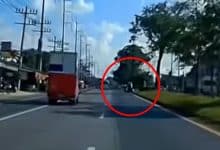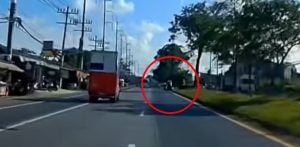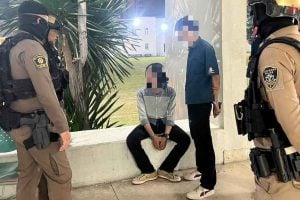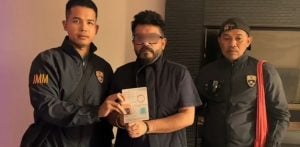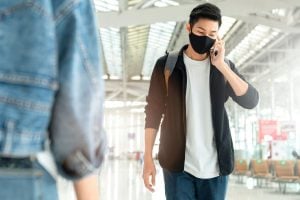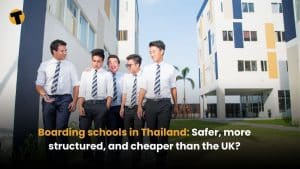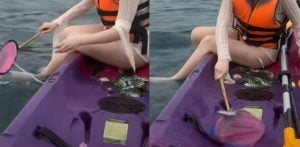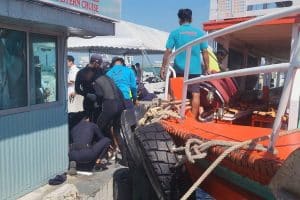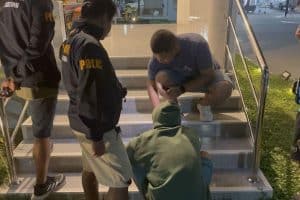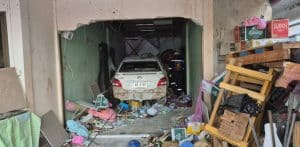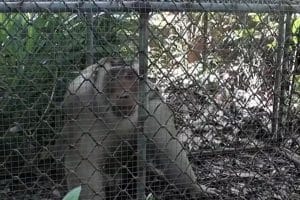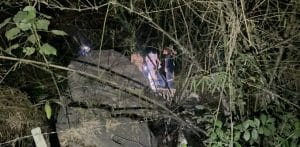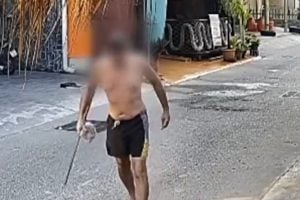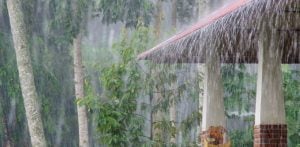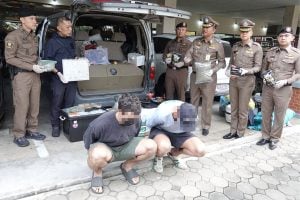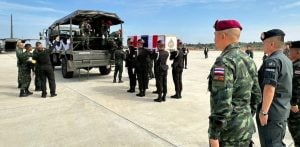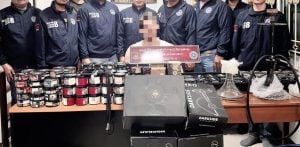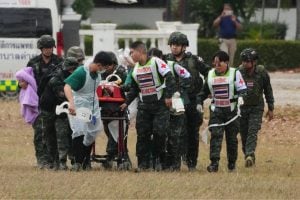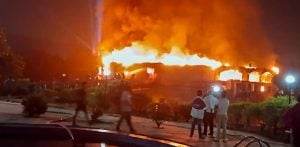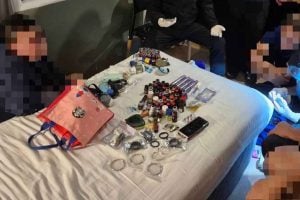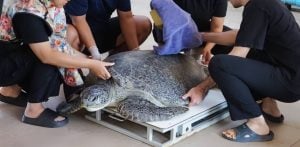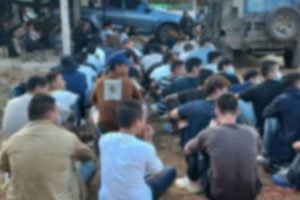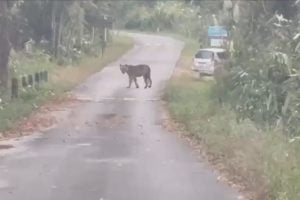Up in the air: Passion for aviation: Part I
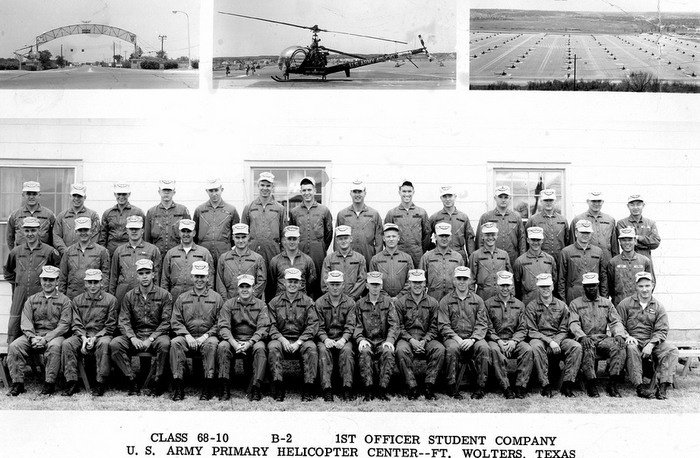
This month, Up In The Air presents the first of a two-part series chronicling some of the aerial experiences of well-known Phuket-based aviator Pat James, an American who completed two tours as a combat helicopter pilot during the Vietnam War.
PHUKET: Most recreational flyers on the island know Pat James as the affable Texan in charge of flight and safety operations at Phuket Airpark in Paklok, as well as for his role as president of the Phuket Aviation Club.
But in his younger days, Mr James was a combat pilot who completed two one-year tours of Vietnam in a capacity that is definitely not for the faint-hearted: as a combat helicopter pilot.
Asked how he originally got interested in a career in military aviation, Pat said he gravitated towards flying as a way of avoiding some of the more mundane aspects of military life.
“My career in aviation really started out as a path of least resistance. I signed up with the US military in 1966. One of the first things they had me doing was washing dishes and cleaning grease traps. I wanted to know what I had to do so I wouldn’t have to do that anymore. They said: ‘Well, if you were an officer you wouldn’t have to clean grease traps anymore’, so I said ‘sign me up!’.
“I ended up passing all the physical and written tests and was eventually allowed to attend an officers’ candidate school. While I was there, it was all infantry training – especially marching. All we did was march. We marched to classes. We marched here, there and everywhere. So I asked, ‘How do I not have to march around all the time?’ They said, ‘Well, if you were a pilot you would not have to march so much.’ So, again, I said, ‘sign me up!’.
Pat then went on to take all the required tests and managed to graduate as an officer, leaving his days of grease trap scrubbing and endless marching behind him.
After graduation, almost all his classmates were immediately shipped off to Vietnam. Pat, however, stayed another year to attend a one-year helicopter flight training program.
“I took to it like a duck to water. I loved flying. It was simple and straightforward for me in every aspect.”
After ‘earning his wings’, Pat was likewise sent off to Vietnam, where he was immediately confronted with all the challenges of piloting a helicopter in wartime conditions.
“You learn to fly in conditions that you would never encounter anywhere else, or would never allow yourself to fly in under any other circumstances – and we did this on a daily basis. Night flying, bad weather flying, low-level flying in trees. You certainly learn how to hone your skills flying helicopters with a full year in Nam. We had a lot of fun and excitement doing it, with some real adrenaline rushes.”
About 99 per cent of his missions were just day-in, day-out support type flying, which nevertheless provided Pat with all types of interesting experiences.
Missions often included flying provisions to the front.
“Infantry on patrol there would go six months at a stretch without seeing a dry pair of socks,” he said.
For those out on the front lines, the sight of a Huey approaching with fresh provisions was the best sight they could imagine.
Items we take for granted in Phuket nowadays were like manna from heaven for American infantryman living in the dense, tropical Vietnamese jungles of the 1960s
“One thing they loaded us up with one time was ice-cream. We got it from a Navy ship offshore. We swapped them out with captured North Vietnamese flags and AK-47s. In return they loaded us up with cartons and cases of ice-cream, which we would take to the guys in the camps out in the field,” he explained.
Combat aircraft aren’t equipped with refrigerators, so it was inevitably a race against time to deliver the highly-prized ice cream to its intended recipients in the jungle camps.
“There is usually a 12- to 24-hour delay shuttling this stuff back to the right location. But by the time they got it, it was liquefied, but the guys on the front didn’t care one bit. They loved it, even if it was more of a milkshake than real ice-cream. They could never get enough, so they would keep giving us North Vietnamese flags and AK-47s they had collected, which the Navy guys wanted as souvenirs,” he said.
The desire for things like ice-cream and other rarities like steaks on the front was so keen that at one point they actually hired a local shop to mass produce North Vietnamese flags, which they would then riddle with bullets to give them an even more cache as souvenirs, he revealed.
“The Navy guys never caught on to it. In their minds they were getting real battle memorabilia, so they were happy to trade their ice cream and steaks for it,” he said.
Pat said that while there were some dark times in Vietnam, the successful delivery of such delicacies to the troops on patrol missions was one of his fondest memories of the conflict.
“Their eyes would just light up. It was one of the best times, most fun times and bonding times you could ever have in those types of situations,” he said.
Most of Pat’s missions during his first tour were aboard a Bell UH-1 Iroquois, better known as the ‘Huey’.
“I flew the UH-1 Huey for about 1,600 hours during my first tour, I also got in about 275 hours in a Loach observation helicopter.”
Bait and switch.
‘Loach’ is the nickname of the two-seat Hughes OH-6 Cayuse.
“The Loaches were manned by a single pilot, along with a door gunner with an M-16 attached to a bungee cord. The Loaches were built for observation. We’d hover over the trees, waiting for somebody to shoot at us. We wanted people to shoot at us; that was the whole idea. After they did, we’d drop smoke and shoot back at them at the same time, then get out of there real fast. Then the gunships would come in and fire on that area.”
“It was the only tactic you could use over the jungle because you couldn’t see the ground through the leaves. So we just had to fly low and slow and play a sort of game with whomever was on the ground,” he said.
Asked if he ever got hit, Pat replied with a literal use of a well-known catchphrase that probably has its roots in military affairs:
“Now and then. You know, that just comes with the territory. It was a challenging time,” he said.
Read Part 2, about Pat’s second tour of Vietnam and his experiences with fixed-wing aircraft in our next the ‘Up In The Air’.
Aviation enthusiasts can contact Pat at Phuket Airpark in Paklok. For more information about the Phuket Aviation Club, visit phuketaviationclub.com
— Stephen Fein
Latest Thailand News
Follow The Thaiger on Google News:

